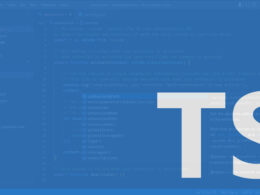Imagine navigating the digital multiverse without a shield. Hold that thought—because, in the uncharted waters of cyberspace, cybersecurity statistics are that shield, a beacon guiding us away from calamitous data breaches and malicious cyber threats.
They’re more than just numbers; they’re tales of close encounters, narrow escapes, and the occasional direct hit in the ongoing battle for digital sovereignty.
From the intricate patterns of phishing attempts to the stark realities of ransomware incidents, this article unpacks the labyrinth of cybersecurity figures and what they mean for you.
It’s not just about being aware; it’s about being prepared.
By the end of our deep dive, you’ll be equipped with insights that can fortify your defenses and an understanding of the cyber threat landscape that could be your ultimate game-changer.
We’ll dissect global cybersecurity indexes, decode the implications of data breach reports, and even venture into the shadowy domain of hacktivist groups.
Our mission? To empower you with actionable intelligence steeped in data, so you can navigate the digital domain with confidence.
A Summary Of These Cybersecurity Statistics
| Category | Statistic |
|---|---|
| Magnitude of Cybersecurity Threats | 80% of state-sponsored attacks target government and non-profits; 58% of nation-originated cyberattacks are from Russia. |
| Financial Impact | Healthcare: $10.1M per incident; Global cybercrime cost: $10.5T annually by 2025. |
| Evolution of Cybercrime Tactics | 98% of cybercrimes involve social engineering; 41% increase in ransomware incidents in 2022. |
| High-Risk Industries | Most targeted sectors: Healthcare, financial services, retail, education, energy/utilities. |
| Investment in Cybersecurity | 9-14% of IT budget for cybersecurity; 3.5M unfilled jobs by 2025. |
| Global Cybersecurity Landscape | 1B emails exposed annually; 236.1M ransomware attacks in H1 2022; Data breaches: $4.35M loss per incident. |
| Cybercrime Growth | 1517% increase in victims over 20 years; 69% rise in hourly victims in 2020. |
| Regional Focus | US: 53.35M citizens affected, $10.2B losses in 2022; UK: 39% of businesses attacked in 2022. |
Table of contents
- Global Cybersecurity Landscape
- Major Cyber Attacks and Data Breaches
- Cybercrime Statistics by Attack Type
- Cybersecurity Trends and Predictions
- Cybersecurity Compliance and Governance
- Security Spending and Cost Implications
- Cybersecurity Job Market
Overview of the Cybersecurity Environment
Magnitude of Cybersecurity Threats
- State-Sponsored Cyber Attacks: Reports from Microsoft indicate that around 80% of these attacks are aimed at government entities, research institutions, and non-profits.
- Cyberattacks in Geopolitical Contexts: About 58% of cyberattacks by nations originate from Russia, with the United States being the primary target, receiving 46% of worldwide cyberattacks.
- Increase in Deceptive Practices: Fraud cases have experienced a 70% increase since 2020.
Financial Impact of Data Breaches
- Risks in the Healthcare Sector: The average cost of a data breach in healthcare is an enormous $10.1 million per incident.
- Economic Cost of Cybercrime: By 2025, the annual global cost of cybercrime is projected to reach a massive $10.5 trillion.
Evolution of Cybercrime Tactics
- Prevalence of Social Engineering: An overwhelming 98% of cybercrimes involve social engineering techniques.
- Surge in Phishing: There has been a 48% increase in phishing attacks in the first half of 2022.
- Supply Chain Vulnerabilities: Around 40% of cyber threats are now associated with supply chain vulnerabilities.
- Growth of Ransomware Incidents: There was a 41% increase in ransomware attacks in 2022.
High-Risk Industries for Cyber Attacks
- Most Targeted Sectors: Industries such as healthcare, financial services, retail, education, and energy/utilities are particularly vulnerable.
Investment and Human Resources in Cybersecurity
- Recommended Budget for Cybersecurity: It is advised that 9-14% of the total IT budget be allocated to cybersecurity.
- Shortage of Skilled Professionals: By the end of 2025, it is anticipated that there will be around 3.5 million unfilled positions in cybersecurity.
Strategies for Future Cybersecurity
- Strengthening Software Security: There is an anticipated emphasis on bolstering the security of software supply chains.
- Adoption of Zero Trust Security Models: Businesses are increasingly adopting zero trust models for enhanced cybersecurity.
- Growth in Cyber Insurance: The trend of acquiring cyber insurance as additional business protection is on the rise.
Major Cyber Attacks and Data Breaches
Global Cybersecurity Landscape: A Tumultuous Terrain
The Staggering Scale of Cyber Incidents
- Email Exposures and Ransomware Onslaughts: Nearly 1 billion emails were exposed in a single year, impacting 1 in 5 internet users globally. Ransomware attacks numbered approximately 236.1 million worldwide in the first half of 2022.
- Financial Fallout: Data breaches led to an average loss of $4.35 million per incident in 2022. In the UK, the average business cost was £4200.
- Phishing: The Ubiquitous Threat: Over 323,972 internet users fell victim to phishing in 2021.
The Geopolitical Influence: A Cybersecurity Chessboard
- The Russia-Ukraine Conflict: Russian-based phishing attacks against European and US businesses increased 8-fold since the Russia-Ukraine war began.
- A Global Phenomenon: Over 53.35 million US citizens and 39% of UK businesses were affected by cybercrime in the first half of 2022.
The Rising Tide of Cyber Threats
- Malware Proliferation: A 358% increase in malware attacks from 2019 to 2020, with global cyber attacks rising by 125% through 2021.
- The Cost of Complacency: Investment fraud, averaging losses of $70,811 per victim, emerged as the most costly cybercrime in 2022.
- The Hourly Havoc: In 2021, there were 97 data breach victims every hour, with an average hourly loss of $787,671.
The Cybersecurity Conundrum: A Global Perspective
The Asian Cyber Arena
- Japan’s Rising Cyber Battles: Japan saw a 40% increase in cyber attacks in May 2021.
- China’s Data Breach Surge: Between Q2 and Q3 of 2022, China experienced a 4852% increase in data breaches.
The North American Nexus
- US: A Prime Target: An estimated 53.35 million US citizens affected and over $10.2 billion in losses due to cybercrime in 2022.
- Canada’s Growing Concerns: A 153% increase in cybercrime reports from 2017 to 2021, with $100 million lost to online fraud in 2021.
The European Digital Battleground
- The UK’s Cyber Struggles: 39% of UK businesses experienced cyber attacks in 2022.
- Greece’s Cyber Resilience: Greece topped the National Cyber Security Index (NCSI) in January 2023.
The Evolving Nature of Cyber Threats
- Supply Chain Vulnerabilities: Up to 40% of cyber threats occur through the supply chain.
- The IoT Dilemma: IoT devices, like the MiCODUS MV720 GPS tracker, have become prime targets for cybercriminals.
- The Human Factor: 82% of breaches involve human error or social engineering.
Cybercrime’s Social Media Front
- Meta’s Malicious App Discovery: Over 400 apps targeting Facebook login credentials discovered in 2022.
- The Rise of Romance Scams: Romance scams cost UK victims £14.6 million in May 2021.
Looking Ahead: The Growing Cost of Cybercrime
- A Costly Future: Cybercrime’s global economic impact is projected to reach $10.5 trillion by 2025.
- The UK’s Cyber Readiness: 82% of UK business boards or senior management consider cybersecurity a high priority.
Cybercrime Statistics by Attack Type
Global Cybercrime Landscape
Email and Phishing Attacks
- Email Exposure: Around 1 billion emails exposed annually, impacting 20% of internet users.
- Phishing Prevalence: Over 323,972 users fell victim to phishing in 2021.
- Phishing Costs: Average loss per attack was $136.
Ransomware and Malware
- Ransomware Surge: About 236.1 million global ransomware attacks in the first half of 2022.
- Malware Explosion: A 358% increase in malware attacks from 2019 to 2020.
Data Breaches
- Costly Consequences: Data breaches averaged $4.35 million in costs per incident in 2022.
- Victim Count: Over 53.35 million US citizens affected in the first half of 2022.
- UK Business Impact: 39% of UK businesses suffered cyber attacks in 2022, costing an average of £4200 each.
Investment Fraud
- High Financial Toll: Average loss of $70,811 per victim in 2022.
Cybercrime Growth
- Increasing Threat: A 1517% increase in victim count over 20 years.
- Pandemic Impact: A 69% rise in hourly victims in 2020, spurred by COVID-19.
Global Statistics
- UK and USA: The UK led in cybercrime victims per million internet users in 2022, followed by the USA.
- Asia-Pacific Region: A 168% rise in cybercrime from May 2020 to 2021.
Cybercrime Trends
Supply Chain Attacks
- Vulnerability Exploitation: Up to 40% of cyber threats via supply chains.
- Third-Party Risk: By 2025, 60% of organizations to weigh cybersecurity risk in third-party transactions.
Internet of Things (IoT) Devices
- Target for Crime: IoT devices increasingly targeted by cybercriminals.
The Human Element
- Phishing Dominance: 82% of business breaches involve human error, mostly phishing.
Cybercrime on Social Media
- Meta’s Challenge: Over 400 malicious apps targeting Facebook credentials identified in 2022.
Cybercrime Trends for 2023
- Rising Costs: Average cyber breach cost of $4.35 million in 2022, with expectations of further increases.
Regional Focus
Cybercrime in Asia
- India’s Surge: More cybercrimes reported in early 2022 than in all of 2018.
- Malaysia’s Losses: Over 20,000 cybercrime incidents in 2021.
Cybercrime in North America
- Canada’s Concerns: A 153% increase in reported cybercrimes from 2017 to 2021.
- US Statistics: Around 53.35 million Americans affected by cybercrime in the first half of 2022.
Cybersecurity Trends and Predictions
Emerging Threats and Alarming Statistics
Staggering Global Cybersecurity Incidents
- Email Vulnerabilities: 1 billion emails exposed annually, affecting 20% of internet users.
- Costly Data Breaches: Average business cost of $4.35 million per breach in 2022.
- Ransomware Rampage: Over 236.1 million global ransomware attacks in the first half of 2022.
- Phishing Predominance: A significant number of users continue to fall victim to phishing.
The Impact of Global Events on Cybersecurity
- Pandemic and Remote Work: A 358% increase in malware attacks in 2020, spurred by the pandemic-induced shift to remote work.
- Geopolitical Tensions: The Russia-Ukraine conflict has escalated cyber threats, notably phishing attacks and breaches.
Financial Implications of Cyber Attacks
- Investment Fraud: The most costly cybercrime in 2022, with average losses of $70,811 per victim.
- Rising Costs Over Time: A notable increase in the hourly cost of data breaches globally.
Cybersecurity Awareness and Preparedness
- SMBs and Cybersecurity: 67% of SMBs feel unprepared for data breaches, despite increased cybersecurity investments.
- Insurance Against Cyber Attacks: Many organizations, especially in the US, lack cyber attack insurance.
Future Predictions and Trends
Supply Chain Attacks
- Rising Threats: 40% of cyber threats occur through supply chains.
- Third-Party Risks: Growing awareness, with 60% of organizations considering cybersecurity risk in transactions by 2025.
Internet of Things (IoT) Devices
- Target for Cyber Crimes: IoT devices increasingly targeted.
- Vulnerabilities in Popular Devices: Incidents like the MiCODUS MV720 GPS tracker expose risks.
The Human Element in Cybersecurity
- Phishing Attacks: Continued significance of human error and social engineering in cyber attacks.
- Social Media as a Battleground: Rising cybercrime activities through social media platforms.
The Growing Cost of Cyber Crime
- Economic Impact: Projected global cost of $10.5 trillion by 2025.
- Increasing Sophistication of Attacks: Escalating costs and need for advanced cybersecurity measures.
Security Spending and Cost Implications
Global Cybersecurity Spending Trends
- Rapid Increase in Spending: Significant surge in global cybersecurity spending due to escalating cyber threats.
- Cost of Data Breaches: Average cost of $4.35 million per breach in 2022, indicating a rise from previous years.
- Investment in Cybersecurity: SMBs increasingly prioritizing cybersecurity, with plans to boost investment.
- Insurance Against Cyber Attacks: Notable lack of cyber attack insurance among many organizations.
Regional Spending and Cost Variations
- United States: Cybercrime losses exceeded $10 billion in 2022, showing an increasing cost per victim.
- United Kingdom: Average cost of £4200 per cybercrime for UK businesses in 2022, with higher costs for larger businesses.
- Asia-Pacific Region: Millions lost annually to cybercrimes, with a dramatic increase in attacks and corresponding cybersecurity spending.
The Impact of COVID-19 on Cybersecurity Spending
- Pandemic Influence: COVID-19 led to increased cyber attacks and data breaches, driving up cybersecurity spending.
The Cybersecurity Job Market
Growing Demand for Cybersecurity Professionals
- Increasing Job Opportunities: Rising demand for cybersecurity experts across various sectors and regions.
- Skills Gap in Cybersecurity: Significant percentage of SMBs report a lack of in-house cybersecurity skills.
- Managed Service Providers (MSPs): Growing reliance on MSPs for specialized cybersecurity solutions.
Regional Job Market Trends
- United States: Robust job market driven by high cybercrime rates and financial losses.
- United Kingdom: Increased focus on cybersecurity, spurred by international threats, driving job growth.
- Asia-Pacific: Rising cyber attacks leading to higher demand for cybersecurity professionals.
FAQ On Cybersecurity Statistics
What are the latest trends in cybersecurity?
Cybercrime’s evolving faster than a binge-watcher’s weekend playlist. We’re seeing a surge in mobile security threats and IoT risks. Encryption statistics also show more data being scrambled than ever, making a hacker’s job tougher, and phishing attempts remain a top threat vector. It’s one relentless game of cat-and-mouse.
How prevalent are data breaches today?
Breaches are spreading like wildfire in a dry forest. Practically every data breach report echoes the sentiment—no one’s immune. From mom-and-pop shops to the tech titans, vulnerabilities are being exploited. Encryption’s a solid defense line, but as cybersecurity statistics reveal, staying vigilant is key.
What industries face the highest cybersecurity risks?
Healthcare’s like chum in shark-infested waters—ripe for attacks given its data value. Finance is another heavyweight contender in the ring, battling to safeguard trillions. The list goes on, and network security trends suggest retail and government aren’t far behind. Every byte of data is a potential honeypot.
How effective are current cybersecurity measures?
It’s a mixed bag. Some security audits findings give a thumbs-up to robust firewalls and intrusion detection systems, but gaps exist. Cybersecurity firm’s software is sophisticated, yet hacktivist groups and solo cyber villains often find a way through, reminding us the race is never over.
What role does artificial intelligence play in cybersecurity?
AI is the new sheriff in town. Picture it: auto-detecting threats, adaptive security protocols, and even predicting breaches before they happen. Cybersecurity gurus are integrating sophisticated machine learning algorithms into their digital defense measures, revolutionizing how we defend our digital frontiers.
What’s the average cost of a data breach?
Imagine flushing a fortune down the drain. That’s the sting of the average breach, hitting pockets hard. It’s not just about the dinero; company reputation takes a nosedive too. Cybersecurity statistics flashing the dollar signs are sobering, emphasizing the value in preemptive strikes to lessen the blow.
What can statistics tell us about future cybersecurity challenges?
Peering into the numbers gives us a crystal ball glimpse. We’re talking rising malware analysis stats, identity theft figures climbing. Cyberattack rates inform us of emerging patterns, pinpointing where we might take the next hit. It’s all about prediction, prevention, and staying one step ahead of the bad guys.
Can cybersecurity statistics influence policymaking?
You bet. Government agencies use this intel like a GPS for navigating the cyber threat landscape. It’s foundational for crafting cybersecurity legislation, be it the GDPR or other compliance data standards. Those numbers are powerful, paving the way for stricter regulations, better ‘cybersecurity frameworks‘, and more informed decisions.
How are cybersecurity statistics gathered?
There’s sweat behind these numbers. Think expert-filled cybersecurity firms, painstakingly crunching data, analyzing patterns. Hacktivist groups incidents, malware names – it’s goosebumps-inducing detective work. They sift through intrusion detection metrics and compile data protection insights—all to piece together the puzzle of cyber threats.
What impact do cybersecurity statistics have on individuals?
It hits closer to home than you’d think. We’re all digital citizens, folks. Those stats shape the cybersecurity products you use, influence the security awareness levels, and fetch you better rates on cyber insurance metrics. From the encryption methods you trust to the authentication mechanisms you use, that data is your unsung hero.
Conclusion
So, we’ve hustled through the gauntlet of cybersecurity statistics, flipping over the dark stones of data breaches and spotlighting the shape-shifters— malware, phishing attempts, the works. It’s a digital deluge of data that’s at once exhilarating and a tad terrifying, no?
But here’s the scoop:
- Understanding these stats equips us with armor.
- Knowledge, after all, is power—especially when staring down hacking patterns and cyber threat landscapes.
- We’ve marinated in numbers, soaked in trends, and now? Well, it’s time to dry off and step out, braver and wiser.
Armed with insight, let’s keep those network security trends as bookmarks, etch those data protection insights on our minds. Together, we’re strengthening our ramparts, fortifying the bulwarks, and getting savvy about securing our slice of cyberspace.
So, let’s raise a glass to stats, shall we? They’re the unsung sentries in our ever-vigilant quest to stay a byte ahead. 💡
- TypeScript Today: What is TypeScript Used For? - April 27, 2024
- Professional Video: Cinematography Apps Like FiLMiC Pro - April 26, 2024
- Optimizing Your Shopify Store for Maximum Dropshipping Success - April 26, 2024









